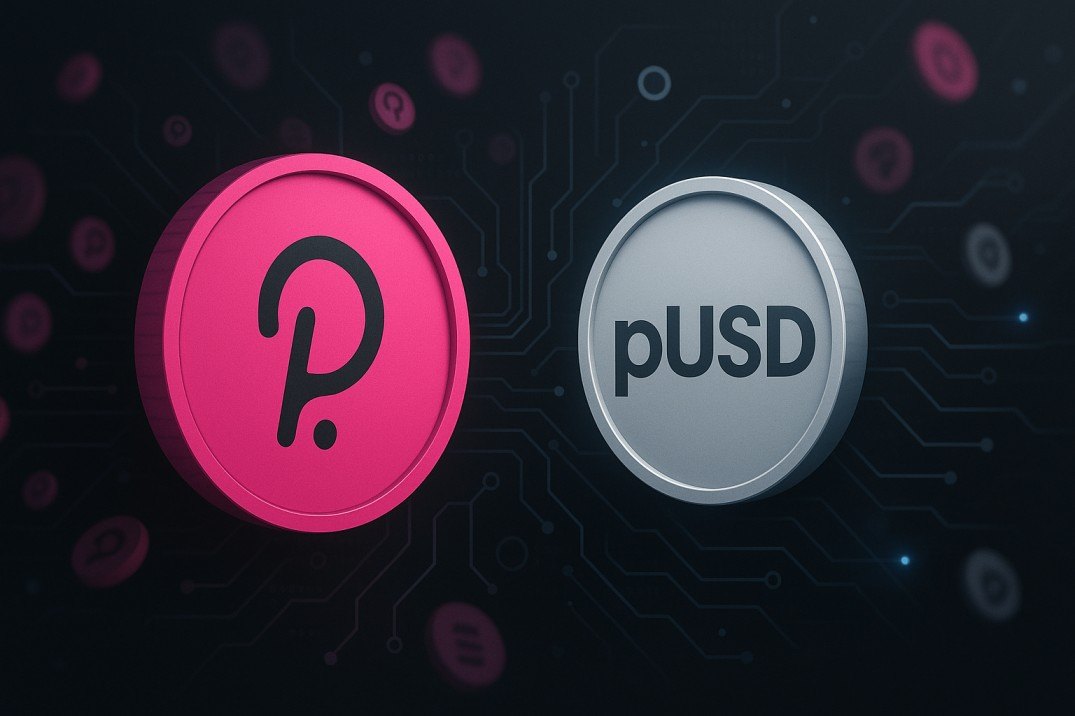TL;DR
- Polkadot community is considering pUSD, a native algorithmic stablecoin fully backed by DOT.
- The proposal, introduced by Acala CTO Bryan Chen, has already secured strong early support.
- pUSD would run on the Honzon protocol, use DOT as collateral, and feature a savings module for interest.
- The aim: reduce reliance on centralized stablecoins like USDT and USDC while strengthening Polkadot's ecosystem.
- Risks remain, especially given the history of failed algorithmic stablecoins, but supporters argue DOT's overcollateralization offers stronger safeguards.
Polkadot may soon have its own native stablecoin. A proposal to launch pUSD, a DOT-backed algorithmic stablecoin, has gained strong momentum in community governance, signaling growing interest in expanding Polkadot's financial layer.
The proposal was introduced by Bryan Chen, co-founder and chief technology officer of Acala, one of Polkadot's leading DeFi hubs. In his submission, Chen argued that Polkadot needs a homegrown stable asset to strengthen its ecosystem:
How pUSD Would Work

According to Chen's design, pUSD would be created using DOT as collateral. The system would rely on overcollateralized debt positions through the Honzon protocol, already deployed on Acala.
Here's how it works in simple terms:
- Users would deposit DOT tokens into the protocol as collateral.
- In exchange, they could mint pUSD - a stablecoin pegged to the US dollar.
- Because the system is overcollateralized, users must lock in more DOT than the value of the pUSD they create, ensuring a buffer against price volatility.
- The proposal also includes an optional savings module. Holders of pUSD could lock their tokens to earn interest, funded by stability fees collected in the system.
In short, it mirrors the structure of MakerDAO's DAI, but with one key twist: DOT would be the sole collateral asset.
Early Voting Shows Strong Backing
The proposal was posted on Polkadot's governance platform, Subsquare, under Referendum 1761 (source link). At the time of writing, more than 1.4 million DOT, worth roughly $5.6 million, has already been used in the vote.
Support has been overwhelming so far, with over three-quarters of participants in favor. But with 24 days left before the ballot closes, there is still time for debate and possible pushback. The early enthusiasm reflects a community desire to reduce reliance on centralized stablecoins such as Tether's USDT and Circle's USDC, which remain dominant across most blockchains.
Why Polkadot Needs Its Own Stablecoin
Stablecoins serve as the backbone of decentralized finance (DeFi). They provide traders and investors with a stable medium of exchange while allowing developers to build lending, borrowing, and yield products without the volatility of crypto assets.
Currently, most activity on Polkadot depends on USDT and USDC, both of which are centralized and tied to traditional financial institutions. For Chen and supporters of pUSD, that reliance is a strategic weakness:
- It exposes Polkadot users to regulatory risks if US-based issuers face restrictions.
- Liquidity is funneled out of the Polkadot ecosystem toward external providers.
- Native onchain stablecoins can deepen economic activity and strengthen DOT's role in the network.
By creating pUSD, Polkadot would join other ecosystems - like Ethereum with DAI - in offering a self-sustaining stablecoin.
Lessons from Past Algorithmic Stablecoins
The idea of an algorithmic stablecoin naturally raises concerns. The collapse of TerraUSD (UST) in 2022, which wiped out billions of dollars in value, remains one of the most infamous failures in crypto history.
But Chen and supporters argue that pUSD is designed differently. Unlike UST, which used an undercollateralized model dependent on market incentives, pUSD would be overcollateralized with DOT. This means: For every $1 of pUSD, more than $1 worth of DOT would be locked in. If DOT's price falls sharply, mechanisms like liquidation kick in to maintain the peg.
In that sense, pUSD is more similar to DAI, which has survived multiple market cycles. The difference is that DAI now relies heavily on USDC as collateral, raising centralization concerns. pUSD's backing by only DOT is both its unique strength and a possible point of vulnerability.
Community and Ecosystem Impact
If approved and launched, pUSD could reshape Polkadot's DeFi ecosystem in several ways:
- Boosting DOT demand: Collateralization would lock up significant amounts of DOT, reducing circulating supply.
- Deepening liquidity: Native stablecoins often serve as key trading pairs on decentralized exchanges.
- Strengthening sovereignty: By reducing reliance on USDT/USDC, Polkadot could insulate itself from external shocks.
Developers could also build lending platforms, stable yield products, and payment applications directly around pUSD, expanding Polkadot's utility.
What's Next
The referendum vote will remain open for 24 more days. If it passes, development work on pUSD would likely begin on Acala, leveraging its Honzon protocol and DeFi infrastructure. For now, the community appears energized by the idea. As Chen framed it, a native stablecoin is not just a convenience but a necessity for Polkadot's future competitiveness.
Whether pUSD becomes the next DAI-like success story or faces the fate of failed algo stablecoins will depend on careful design, strong governance, and sustained community support.











